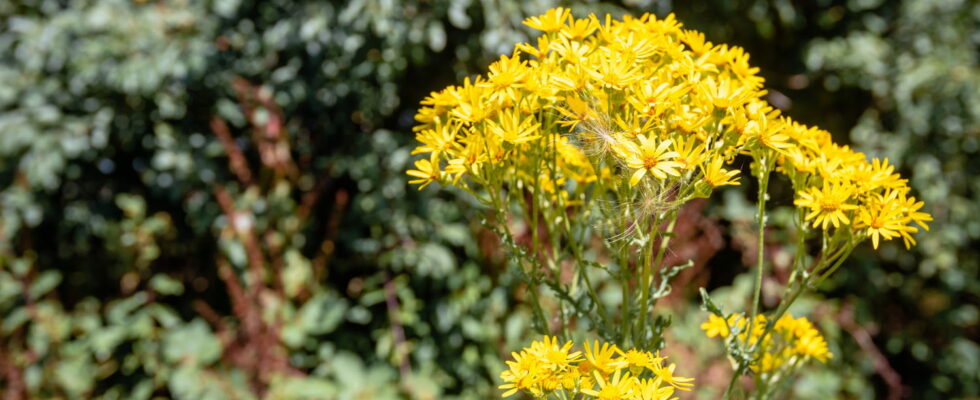This pretty plant with yellow flowers is very toxic. It should not be neglected. If you see them in your garden, act quickly to get rid of them, taking the necessary precautions.
Not all plants are welcome in your garden, some can be dangerous. This is the case of this plant with pretty yellow flowers called ragwort. Although it may seem harmless at first glance, its toxicity is formidable! If you see them in your garden, it is imperative to get rid of them quickly and carefully. It is a very invasive plant.
There are more than 1,500 species of ragwort across the world. In Europe, ragwort and common ragwort are frequently found. Ragwort, one of the most common species, can reach up to one meter in height. It has erect stems, deeply cut leaves and its yellow flowers appear from May to October. Common ragwort, smaller, can be recognized by its lobed leaves and bright yellow flower heads.
At first glance, this plant does not seem alarming. It has small yellow flowers, which can also remind you of those of the dandelion. But behind this harmless appearance hides a dangerous substance: pyrrolizidine alkaloids. The latter are toxic compounds, present in all parts of the plant: roots, stems, leaves and flowers. They can cause serious liver damage. In the long term, ingestion, even in small quantities, can cause serious liver diseases or even be fatal.

Ragwort toxicity is not limited to humans and pets. Grazing animals, such as horses, cows and sheep, can be poisoned by consuming this plant. The effects are often cumulative, meaning that symptoms may appear late, after multiple ingestions. Signs of poisoning include weight loss, lethargy, neurological disorders and digestive problems.
The plant often grows along roadsides, in neglected fields and gardens. Be careful, the plant is invasive, a single plant can produce thousands of seeds, which are easily spread by the wind, and which can reach your garden. If you’re not careful, it can quickly colonize an entire garden.
If you spot ragwort in your garden, don’t wait to act. A first piece of advice, nNever handle this plant with bare hands. Pyrrolizidine alkaloids can be absorbed through the skin. Here are some steps to get rid of them safely:
- Pull out the plant. It is important to remove the plant along with its roots, as it may regrow if simply cut. You can use a hand weeder to ensure that no root residue remains in the soil.
- Dispose of it properly. Do not compost it, as the toxins can contaminate the soil. Throw it away in airtight bags, then in household waste.
- Watch for his return. Ragwort spreads quickly. Continue to monitor your garden to prevent it from re-establishing itself.
